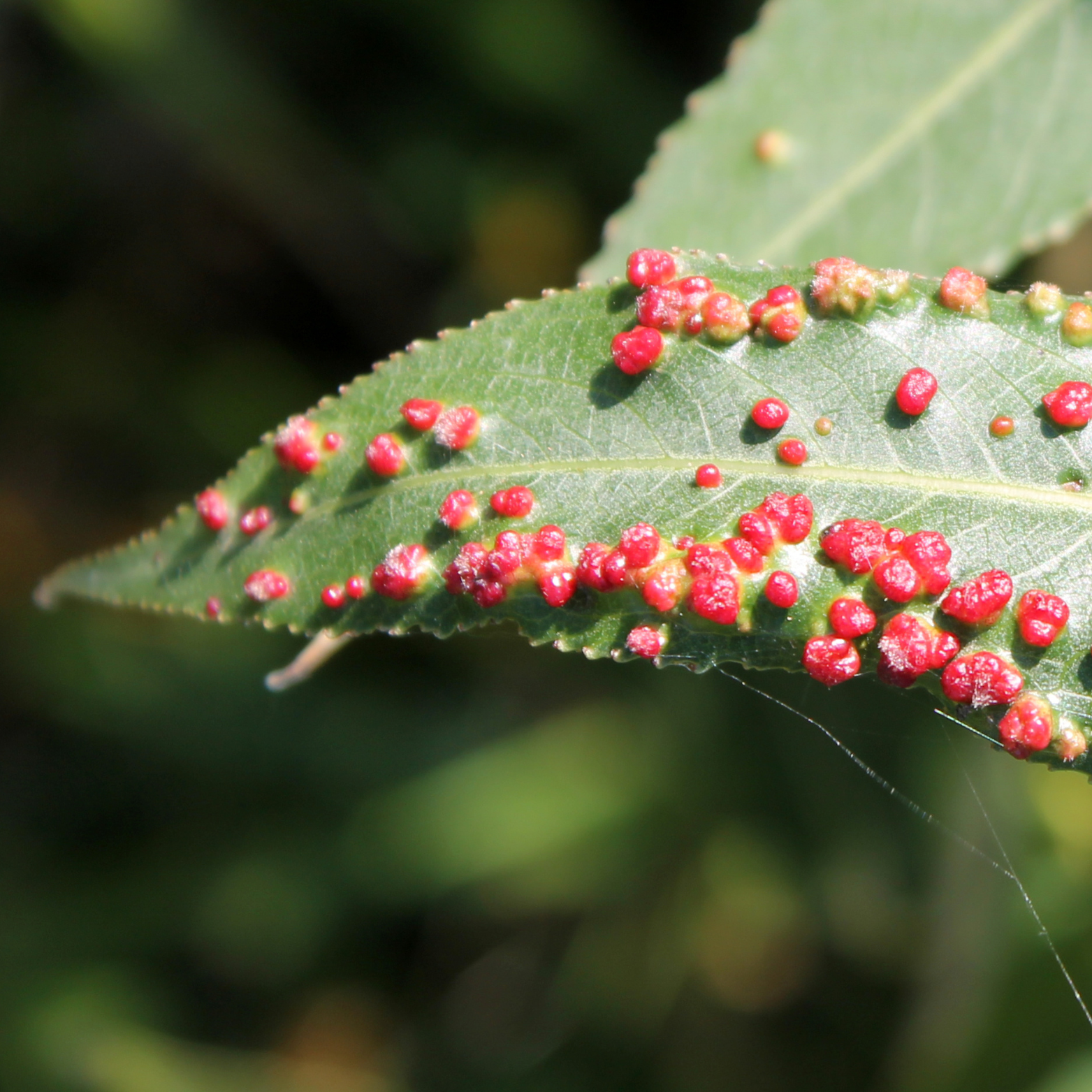
Plant Reprogramming 101
Posted on May 12, 2023
Have you ever been walking through the woods and noticed something that looks suspiciously sci-fi protruding from a plant? Fear not! Aliens have not invaded. You (probably) haven’t discovered the next threat to humanity. It is far more likely that you’ve stumbled upon galls.
What on earth are galls? They are abnormal plant growths caused by “gall makers”, which are most commonly mites or insects, such as aphids, gall midges, and gall wasps. Around 1500 insects in the United States alone can produce galls! Other gall makers include bacteria, fungi, or nematodes. Galls can take many different shapes—from swollen lumps to anatomically complex formations that can be really interesting to look at. Okay … but, how? And why do they look like … well, THAT?
Galls are formed when the gall-maker feeds on the plant and secretes saliva. This feeding stimulus causes plants to increase their production of normal growth hormones, thus increasing cell sizes / cell numbers (kind of like the plant was reprogrammed). As the gall-maker continues to feed and reproduce inside the gall, the gall continues to grow. Normally, galls form in late spring during the growth period of new leaves and flowers, so mature plants are usually not affected.
If that’s not wild enough for you, get this—while the type of gall formation itself is specific to the gall maker that caused it, sometimes, the living organism inside a gall might not be the original gall maker. This scenario happens if the original gall maker is interrupted or starved by another parasite, who then takes its place.
So, are galls good or bad? Do they hurt the plant? The answer to that isn’t exactly black and white. The general consensus is that galls usually do not cause the plant significant harm unless they occur in very large numbers, which does not tend to happen very often. For the most part, plants and gall makers have a balanced relationship. That being said, there are some gall makers that can cause substantial, irregular galls that have the potential to girdle and kill trees.
If you have the gall to read even more, check out this link. There’s even a gall-ery!






















